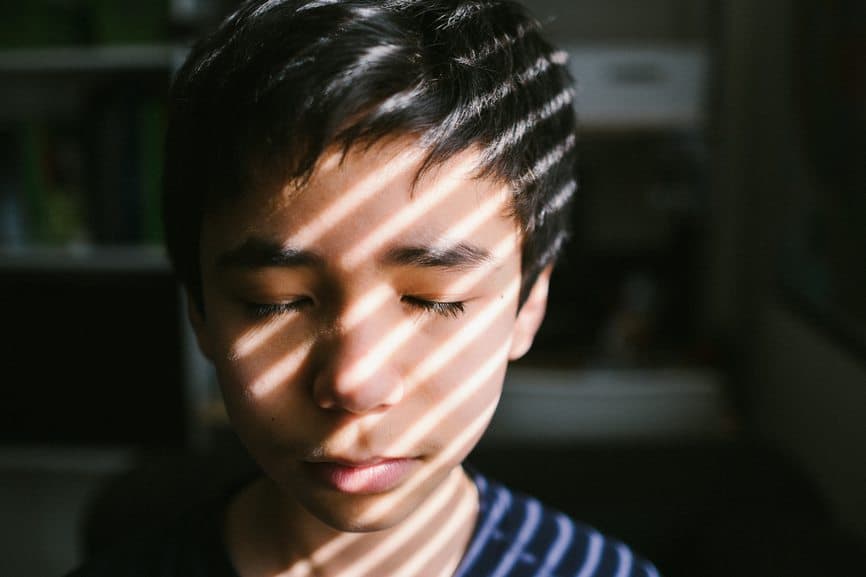
Meditation Might Calm Your Children and Even Help Them Sleep
Since the dawn of time, parents have been trying to figure out how to get their children to go to bed at night. And that struggle doesn’t necessarily stop as kids get older. I started to notice that my 12 year old had a very difficult time settling down at night. At bedtime, she didn’t seem sleepy at all, in fact she was bursting with energy. A friend suggested I try meditation.
Meditation helps kids fall asleep
I’ve never been a meditator myself so it all sounded very new age-y. But when your tween is bouncing on her bed when she really should be sleeping – you find yourself up for anything. I downloaded an app called Headspace (based on a friend’s recommendation) and started letting her listen to a 9 minute meditation after I tucked her in at night.
And it actually worked! It really did help her to wind down and go to sleep. We started doing it almost nightly and she really likes the routine of it. (Because I don’t want her to sleep with a phone by her bed – I simply return 15 minutes later and retrieve my phone.)
New York mom Lori White (names have been changed) also used a meditation app to calm her 10 year old son Brady when he starting have trouble sleeping at night. She says, “He had a difficult time winding his mind down and would stay up way too late reading. So we started listening to a kids’ sleep meditation and he was often sound asleep by the end of the 6-minute meditation.”
Meditation helps kids during the day, too
But meditation can be used as a tool to help center and calm children at any time of day.
Clinical Psychologist Alissa Sheldon is a huge fan for some kids. She says, “Whether it be through guided meditations, like apps or podcasts, for the right child, it can give them a sense of control in an otherwise unwieldy environment. Children who tend to be somewhat introspective seem to derive greater benefit from the technique, and those kids who are more outward focused may learn ways to calm and relax.”
Kristin Carothers, Clinical Psychologist with the Child Mind Institute, also sees the benefits. “Meditation can be extremely helpful to kids because it teaches them to focus on one thing and to avoid distractions by just being aware and living in the moment,” she says.
Schools have taken note, too. One Baltimore school started offering meditation in lieu of detention. According to Upworthy, the school has a “Mindful Moment Room” where, “Misbehaving kids are encouraged to sit in the room and go through practices like breathing or meditation, helping them calm down and re-center. They are also asked to talk through what happened.”
Some science behind meditation
So how does this mediation stuff work anyway? Simply put, there’s actually something called the vagus nerve which connects your brain to internal organs like your lungs, abdomen and heart. When you slow down your breathing (like you do with meditation), your vagus nerve notes that things must be calm and “it will convey this message to the brain, which (nine times out of ten) will then ease control over the to parasympathetic nervous system, allowing you to relax, rest, and digest.” In short, whereas we’re used to the brain telling the body what to do, in meditation through breathing and deep relaxation, the body is sending “chill out” messages to the brain. Pretty cool, right?
We’re ready to start meditating; what to do?
Psychologist Kristin Carothers says, like anything, learning how to meditate can take time. “It may be difficult for young children with short attention spans to meditate for as long as an adult would. Start slowly and build meditation into your daily routine.”
In addition to Headspace, you can find some other meditation apps for kids here. Or let us know how you help your child meditate. We’d love to hear what’s working for your family.
Photo source: Stocksy/Kelli Kim
****************
Dear readers, you can leave a comment without having to register. Just sign in as a “guest.” We love and appreciate your insights!

